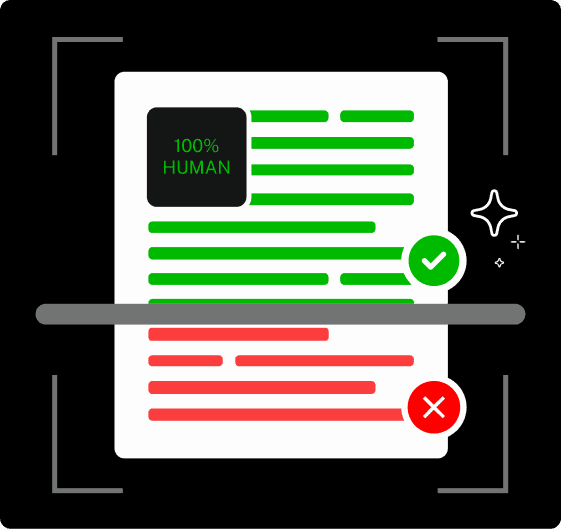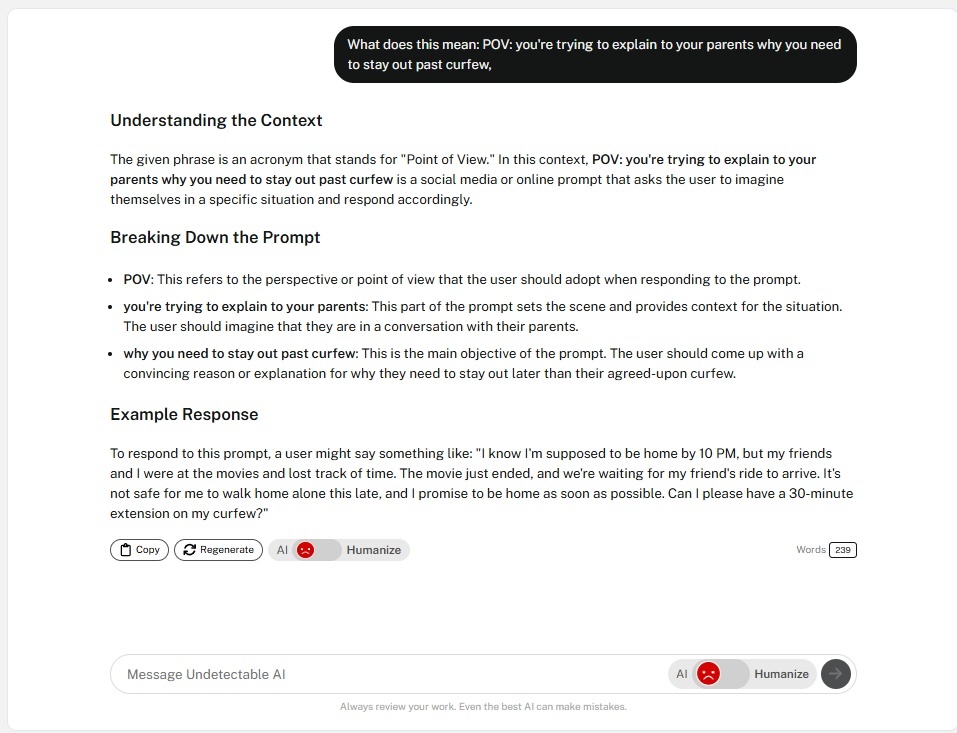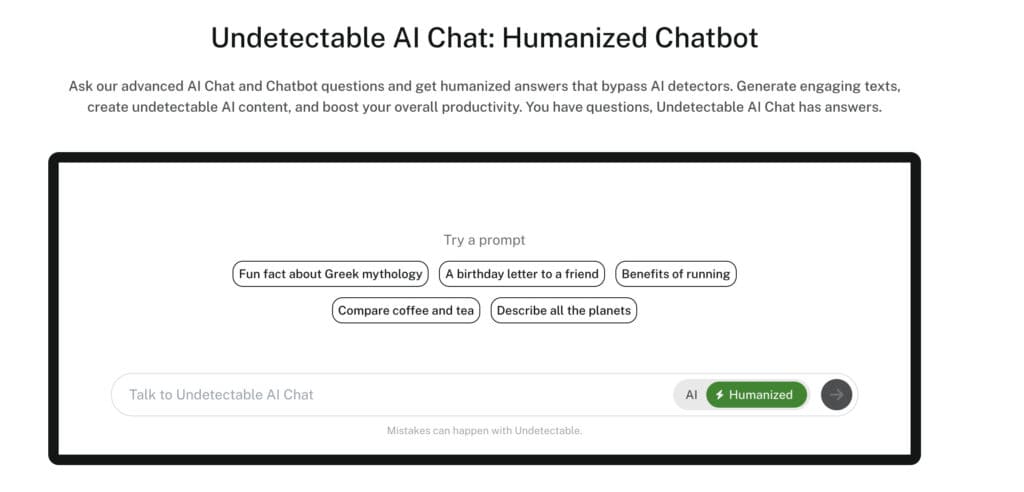Although the abbreviation “POV” is all over the Internet and social media platforms these days, did you know that this word was first used in the 1960s?
While we didn’t have content creators and vloggers before, it was simply used as a shortened way to say “point of view.”
But when it’s used in captions on TikTok, Reddit topic titles, or social media content, point-of-view usually refers to a scenario where you’re supposed to imagine yourself in a specific role or situation—a personalized angle.
If you’ve found yourself confused by this three-letter acronym, the confusion is justified.
The meaning can shift slightly depending on where it’s used.
Let’s break down what POV means across different platforms and how you can use it correctly in your own content and conversations.
Why Everyone’s Saying POV Now
Remember when everyone started saying “literally” for emphasis, even when things weren’t literal at all?
Though it wasn’t named as one of the top words of 2024, like “demure,” POV has followed a similar path to ubiquity.
Five years ago, POV was mostly used as a film term or something you’d encounter in English class.


Never Worry About AI Detecting Your Texts Again. Undetectable AI Can Help You:
- Make your AI assisted writing appear human-like.
- Bypass all major AI detection tools with just one click.
- Use AI safely and confidently in school and work.
Now it’s everywhere. TikTok creators start videos with it. Friends use it in group chats. Memes are built around it.
The explosion of POV coincides with the rise of first-person content creation. As platforms like TikTok and Instagram Stories gained popularity, they turned everyone into a storyteller.
When you’re constantly creating narratives from your perspective, POV becomes a natural shorthand.
Social media thrives on immediacy and authenticity. The term POV frames content as a genuine experience rather than something manufactured.
In an online world full of filters and carefully curated feeds, claiming something as your “POV” signals rawness and reality.
What Does POV Actually Mean?

POV stands for “point of view.”
The traditional definition comes from literature and film. It refers to the perspective through which a story is told. Is the narrator all-knowing?
Are we seeing events through one character’s eyes? That’s POV in its original context.
But like many terms that migrate to the internet, POV has evolved.
On social media, POV often introduces a scenario where the viewer is meant to imagine themselves in a specific situation.
It’s an invitation to step into someone else’s perspective or experience.
In texting, POV can function as a signal that someone is about to share their personal take on a situation.
It’s the digital equivalent of “in my opinion” or “from where I stand.”
The beauty of POV lies in its versatility. It creates immediate context for whatever follows.
With just three letters, content creators establish:
- Whose perspective we’re seeing
- What kind of scenario we’re about to witness
- Whether we’re meant to be participants or observers
- Their unique brand tone of voice
POV in Social Media (TikTok, Instagram, YouTube)

Social media platforms have embraced POV in different ways, but TikTok deserves special credit for catapulting the term into mainstream usage.
On TikTok, “POV” typically appears as text overlay at the beginning of a video. The creator is setting up a scenario where the viewer should imagine themselves as a participant.
Many creators also use quick tools to download TikTok videos for future content ideas or reposts.
For example, “POV: You’re the new kid at school and the popular girl decides to be your friend.”
The creator then acts out the scenario, with the viewer mentally placing themselves in the scene.
In a recent interview with TODAY.com, Benjamin Morse, a visiting lecturer in New Media at the University of Las Vegas, Nevada, explained how this shift happened: “The early version of ‘POV’ meant, ‘This is a video from my point of view.’
That’s different from professional videos of yesteryear, seen from third-person perspectives.”
Morse adds, “The generation growing up on TikTok is now shooting videos on their smartphones, which means the viewer can see things exactly as the person filming.”
This immersive first-person format has redefined how creators tell stories online.
It blurs the line between audience and character in ways that traditional media never did.
What makes TikTok’s use of POV interesting is how it inverts traditional storytelling.
Rather than the creator sharing their perspective, they’re creating an experience for the viewer. It’s interactive storytelling in fifteen seconds or less.
Instagram has adopted similar POV usage in Reels, its short-form video feature.
YouTube creators might use POV in thumbnails or titles to indicate role-play content or scenario-based videos.
Creating compelling POV content isn’t always straightforward. You need to strike the right balance between specificity and relatability.
Too specific, and viewers can’t connect. Too generic, and it lacks impact.
So if you’re struggling with POV content ideas, Undetectable AI’s AI Chat can help brainstorm unique scenarios tailored to your audience.
The tool can generate creative POV premises that will resonate with viewers and potentially boost engagement.
Simply enter a general theme, and AI Chat can suggest several POV scenarios to spark your creativity.

Some of the most successful POV content on social media includes:
- Scenarios that tap into universal experiences
- Situations that feel authentic rather than contrived
- Content that elicits strong emotional responses (nostalgia, humor, surprise)
- POVs that create a sense of belonging or shared experience
POV in Texting and Casual Chats
In the world of text messages and group chats, POV functions a bit differently than on video platforms.
Here, it’s less about creating scenarios and more about signaling personal perspective.
When someone texts “POV: me watching my crush talk to someone else” followed by a sad emoji, they’re sharing how they feel in that specific situation.
It’s a shorthand way of saying, “This is my experience right now.”
In messaging, POV often introduces:
- Real-time reactions to events
- Personal takes on shared experiences
- Hypothetical scenarios to make friends laugh
- Self-deprecating observations
The beauty of POV in texting is its efficiency.
That efficiency matters even more when your message needs to sound like you.
If you’re using AI tools to help shape your tone or write creative POV captions, Humanize AI can refine your content so it feels more natural and emotionally accurate.
It helps transform robotic phrasing into something expressive and personal—perfect for POV-style content that resonates.
Those three letters pack a lot of contextual meaning into a small space, perfect for quick messages where every character counts.
Sometimes text conversations include slang or abbreviations that can be confusing, especially when POV gets combined with other internet shorthand.
If you’re unsure about what a message with “POV” means, Undetectable AI’s AI Chat can help.
Simply paste the confusing text, and it will break down the meaning for you, including any complex POV usage or accompanying slang.

For example, if someone sends “POV: you’re trying to explain to your parents why you need to stay out past curfew,” AI Chat can explain that this is setting up a relatable scenario about the awkwardness of teenage negotiation with parents.
No more asking friends to explain internet slang and risking embarrassment.
AI Chat handles the interpretation discreetly and accurately.
Creative Uses of POV in Writing
While social media has claimed POV for quick content, the concept has deep roots in literature and creative writing.
Understanding POV in its traditional sense can actually make you a better content creator.
In fiction writing, POV comes in several flavors:
- First-person POV: The narrator uses “I” and “we.” We experience the story through one character’s perspective, complete with their biases and limited knowledge. Think of “The Catcher in the Rye” or “To Kill a Mockingbird.”
- Second-person POV: The narrator addresses the reader as “you,” placing them directly in the story. This is rare in novels but common in choose-your-own-adventure books. Notice how this mirrors social media POV usage!
- Third-person limited POV: The narrator refers to characters as “he,” “she,” or “they,” but only reveals the thoughts and feelings of one character. Most popular novels use this approach.
- Third-person omniscient POV: The narrator knows and shares the thoughts and feelings of multiple characters. Classic novels often use this style.
What’s fascinating is how social media has reinvented POV for the digital age.
TikTok’s popular POV format most closely resembles the second-person perspective, where “you” are placed into the scenario.
Creative writers can learn from this evolution. The immersive, immediate quality of social media POVs can inspire more engaging fiction.
Similarly, understanding traditional POV techniques can help content creators craft more sophisticated scenarios.
Some creative applications of POV include:
- Using POV shifts to create mystery or suspense
- Creating unreliable narrator POVs for twist endings
- Experimenting with unusual perspectives (animals, inanimate objects)
- Combining different POVs to show multiple sides of a story
Writers of all types (from novelists to tweet composers) benefit from understanding the power of perspective.
Explore our AI Detector and Humanizer effortlessly in the widget below!
When Perspective Becomes the Point
POV has transformed from a literary term to an essential piece of internet vocabulary.
Creative writing tools, social media captions, and texting shorthand are all used to convey personal experiences in ways that stick.
It doesn’t matter if you’re creating TikTok videos, texting friends, or writing creative fiction—understanding POV enhances communication and storytelling.
On social media, POV creates immersive scenarios that viewers can step into.
In texting, it signals personal perspective and lived experience. In creative writing, it determines how readers experience the story world.
The popularity of POV reflects our desire for authentic connection in digital spaces.
By framing content through specific perspectives, we invite others to see the world as we do or to experience scenarios through fresh eyes.
Next time you see “POV:” in your feed or messages, you’ll understand not just what those letters stand for, but the rich layers of meaning behind them.
When you’re ready to create your own POV content, you’ll have the knowledge to use this powerful tool effectively.
Remember: good POV is about truly capturing a perspective that resonates with others.
Master that, and you’ve mastered a key element of modern digital communication.
For extra help refining your writing, Undetectable AI offers smart tools that can bring your voice (and your POV) to life.
